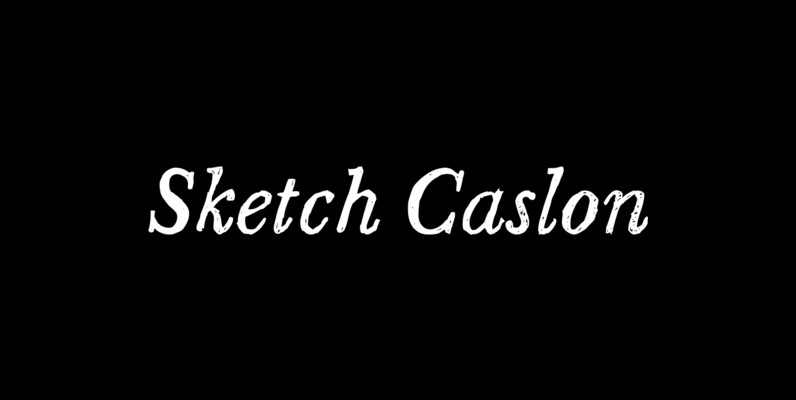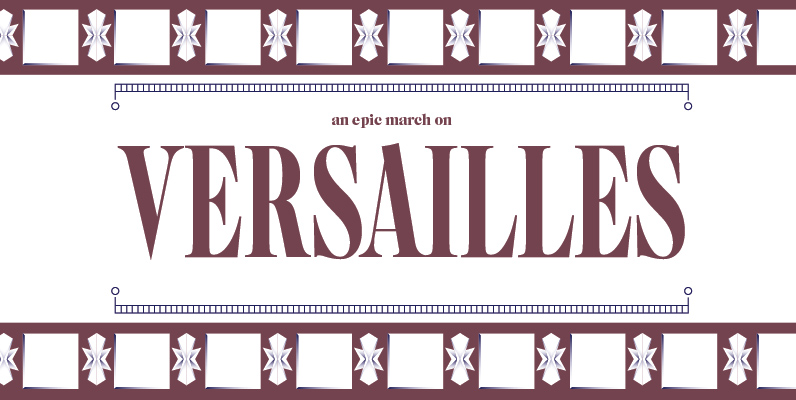The Pedigree of LTC Caslon
Caslon Old Style is recognized as one of the finest examples of the “Old Style” group of type faces. It was originally cut by William Caslon in England, in about 1720, and is rated by many authorities as first for all-around usefulness. The inspiration for the design was probably Dutch types, notably those of Bishop Fell.
In 1858, Laurence Johnson, a prominent Philadelphia type founder, visited London and arranged with the successors to William Caslon to duplicate the Caslon types. There is some question as to how this was done exactly, but the result was a virtual duplicate of the original Caslon types but more loosely fitted than the English version. When Johnson’s foundry merged with MacKellar Smiths & Jordan, this typeface was sold under the name “Original Old Style”.
Around 1915, Monotype cut its version of Caslon called “Caslon Old Style, No. 337”. This version has been called “MacKellar Caslon” because the design is closely related to the original face associated with that foundry. Composition sizes were modified to fit the standard arrangement and Lanston Type Co.’s original Caslon fonts were based upon these designs made for composition. One of the most noticeable features of Caslon is the lack of uniformity from one size to another.
In remastering this font for release in 2005, the characters have been completely redrawn based upon the 14pt font for hand composition. This design is closer in spirit to the original Caslon. The original Caslon issued by Monotype featured short descenders so that the face would fit on a standard alignment; however, Caslon 337 was the first Monotype typeface to offer optional characters with long descenders so as to replicate the original Caslon more faithfully. LTC Caslon comes in both variants — the regular fonts featuring short descenders and fonts designated as “long” have the longer descenders.
Caslon’s original italic featured swash characters for the letters J, Q, T, Y and h with the final stroke turned inward. Later plain versions of these letters were added to Caslon fonts. LTC Caslon contains the plain variants as defaults; however, the OpenType version of this font features a “stylistic set”* that allows users to emulate the original Caslon more closely.
To apply this feature, choose Stylistic Set #1 in the OpenType Menu, alternately these characters may be accessed via the glyph palette. Additional swash variants for italic capitals were drawn by a variety of artists for a variety of foundries.
LTC Caslon Swash contains swash characters drawn by Monotype, augmented by characters drawn by ATF where no swash forms existed as well as completely original swash forms for X and Z. The OpenType version of the Italic also features an alternate set of Swash Caps drawn by Carl S. Junge for Barnhart Brothers & Spindler in 1924.
These characters are quite noticeably a product of a different time period and of a different style than Caslon, but their genius is that they have been designed so as not to require any kerning. These caps can be accessed with Stylistic Set #2 or via the glyph palette.
The companion boldface for LTC Caslon is actually based on two similar designs, which differed only in the length of descenders: New Caslon and American Caslon. New Caslon was originally designed by Inland Type Founders in 1905 in an attempt to strengthen the appearance of the typeface so that it would more closely resemble the original Caslon as printed in the 18th century.
Random Caslon facts: The Declaration of Independence was first printed in Caslon. Ben Franklin used Caslon’s types in his printshop. The pound sterling mark for many Caslon fonts was simply the swash J rotated 180 degrees. The OT versions of LTC Caslon offer this as an alternate.
*Stylistic Sets are currently only supported by Adobe CS2 products.
Facts about Caslon were taken from “American Metal Typefaces of the Twentieth Century” by Mac McGrew and Lanston Monotype promotional specimen sheets circa 1924. For expansive details on all metal versions of Caslon see: “American Metal Typefaces of the Twentieth Century” by Mac McGrew.

